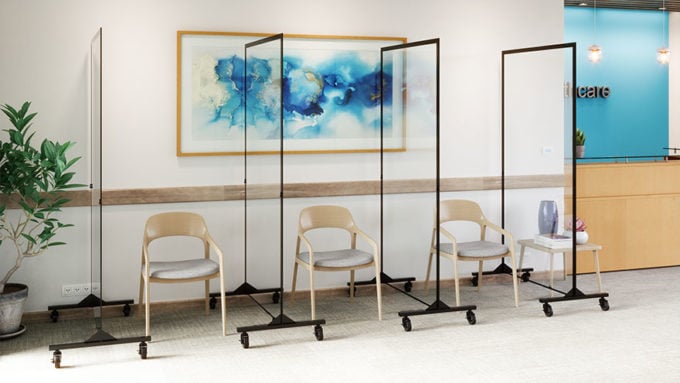Temperature Screenings: The New Normal
Market: Healthcare
Many adjustments have occurred in businesses and organizations since the start of the Coronavirus Pandemic. Some organizations have resorted to only curbside pickup of products; others have closed down entirely. Regardless of the current state of each business, everyone is wondering how the return to “normal” will look. Though the recovery will look different in various industries, a common denominator in most of them will be temperature screenings. 
Why Temperature Screenings?
According to the CDC, 83-99% of people infected with the Coronavirus experience a fever as a symptom. With those percentages as high as they are, it’s essential to begin taking employee temperatures if not doing so already. Many healthcare facilities are already limiting cases from coming into contact with one another by performing this action. For instance, many senior living facilities have rules for employees to take their temperature every time they leave and come in the building. In areas where higher risk people congregate, like assisted living, screenings are especially important.
Which Industries Should Do This?
Until scientists create a vaccine for this illness, just about every industry will likely follow these guidelines, especially the ones that have more person to person contact. Since thousands of people enter airports during regular times, they are an excellent example. This screening of passengers is likely to be more common in “hotspots” of the virus. Depending on the region, plenty of other industries are already on this trend since it is recommended or required. Retail, schools, and of course, medical facilities are among some of the other workforce previously mandated to take this step.
When and Where Do These Temperature Screenings Take Place?
It is encouraged to take these screenings before entering a building. If this is not feasible, or if space allows for it, immediately after entry works fine as well. In the case of airports, they may require screenings before all security checkpoints. This added measure will likely occur every day and even for people who leave the facilities and come back on the same day.
Overcoming Screening Challenges
A potential challenge of these screenings is the number of employees arriving at their office all at once. If it takes too long to enter the building, crowds or lines can occur. However, there are possible solutions to limit the probability of germs spreading in a large group. For instance, staggering employee schedules could help minimize contagion. If workers arrive at different shifts throughout the day, they can lessen the number of people entering all at once. 
Another solution to this challenge is to create separate areas for people to do the screenings. Since many thermometers typically take about 30 seconds or more per person for an accurate read, time can add up if there is a crowd. Any person standing in line risks exposing themselves or others to the virus. Screenflex Portable Room Dividers can help to create a short-term check-in station. Having a barrier between each employee enhances social distancing and helps prevent the spread of germs. These dividers are both durable and longlasting. In the distant future, when these screenings are no longer necessary, the dividers easily store compactly and are reusable. Creating multiple stations with the partitions can speed up the entry process as well as keep employees safe.
While temperature screenings are a probable change coming soon, there are still many opinions on how post-pandemic life will look. Whatever the new changes are moving forward, we should all be doing our part to tackle the virus and create a healthier and better world.